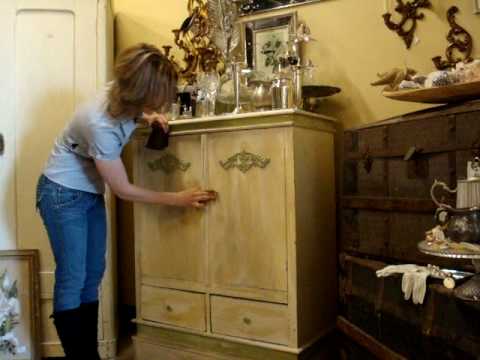Professional Advices on Painting Techniques for Furniture Distressing:
Distress painting typically is done to furniture or cabinetry pieces. If done well, a distressed piece of furniture takes on the look of a much older piece. It is an excellent choice of faux finish for old yard sale or flea market finds that painted over several times or have taken some abuse over the years.
No.1: Preparations
If the piece has not been formerly abused, some people prefer to distress the actual wood before beginning to paint. This is not recommended for irreplaceable antique pieces, but more for modern furniture of little value. Any heavy object that you can safely use to hit the piece works as well. A heavy chain or similar object works well, while a hammer can put a few heavier dents in the wood. Nail holes look like old wormholes when placed in on an angle.
Things you need to prepare are:
Flat latex paint of any color
Flat latex paint of a contrasting color
Two-three quality paint brushes
Sheets of old newspaper
Some clean rags
Sandpaper of 2-3 grades
Paste wax
Wood varnish
Denatured alcohol
No.2: Sanding
The easiest way to distress paint is with simple sanding. Choose at least two complimentary paint colors. Apply the first coat and allow it to dry completely. Usually this takes about four hours, but many prefer to wait overnight to be sure. After it is dry, use 100 grit sandpaper to sand down the whole surface lightly. Choose a few areas and sand them down just until the wood shows through. Clean the surface with a damp rag and paint the second color over the first. Allow this coat to dry and repeat the sanding process, this time sanding just enough to show the under coat in key places. After cleaning the surface, a top coat of clear lacquer can be applied if you desire. A similar look can be achieved using a color blending product, such as Mess Master. This product can be used with a rag to smudge the paint down to the wood in specific places.
No.3: Staining
For a slightly different look, stains can be used to discolor the paint of your choice. Begin by painting the piece with any light color you desire. Dark paint colors do not pick up the stain well and will not achieve the look you desire. Use a large-headed brush to leave behind brush strokes while applying the base coat. Mix dark brown paint into a small bucket of water. Add enough paint that it is still very thin, but colored dark. It should resemble a wood stain. Use a rag to rub the mixture into the first paint color. Allow the ragging to dry. You can apply several coats of the mixture if the color is not as dark as you would like.
No.4: Other Finishes
Crackle paint is a popular choice for distress painting. To use a crackle paint finish, apply a base coat of paint to the object. Once that has dried completely, paint on a layer of special crackle finish that can be found at most hardware or craft shops. Paint a complimentary paint color over the crackle finish. It should begin to crack and peel almost immediately. Do not roll over an area that is already painted, since that will cause the paint to pull completely off the wall. A thicker coat of paint will give deeper cracks, while a thin coat will be more subtle. A similar look can also be achieved using bits of petroleum jelly in place of the crackle coat. Sponge on some petroleum jelly to corners and edges before painting the top coat on. Allow the top coat to dry overnight. In the morning, use a soft rag to lift away the paint above the jelly. Clean the piece well before applying any finishing lacquer. (Refer to:http://www.ehow.com/info_8288112_distressing-paint-techniques.html)
Some Helpful Tips:
1. To render a cracked furniture effect, apply a thick layer of chalk paint on surface of the furniture and immediately use a hair dryer on it. You will notice the cracks forming as you are drying it. You can apply clear wax on it, to bring out the cracks even more.
2. You can also use petroleum jelly to distress furniture. Apply a base coat of paint to the furniture. Let it dry and then rub a bit of petroleum jelly to surface areas which you want to show through. Apply the top coat and let it dry.
3. To give the furniture some dents or scrapes you can use various tools. Using a chain can give you elliptical dents, while a hammer will give more pronounced dents. Be creative, and use various tools on the furniture to see what kind of effect they gives.
4. You can paint the metallic objects on the furniture a beautiful gold or bronze color to make you furniture look even cooler.
Hope the above info will be helpfull for you. Thank you for reading.
Edited by Kevin from Xiamen Romandy Art Limited.
(Xiamen Romandy Art is a professional oil paintings supplier from China. If you want to convert your photos into high quality oil paintings, or you want the masterpiece oil painting reproductions, please don's hesitate to contact with us.)
Romandy Art Website: http://www.oilpaintingcentre.com
Tags: Painting Techniques for Furniture Distressing--Professional Advices
|